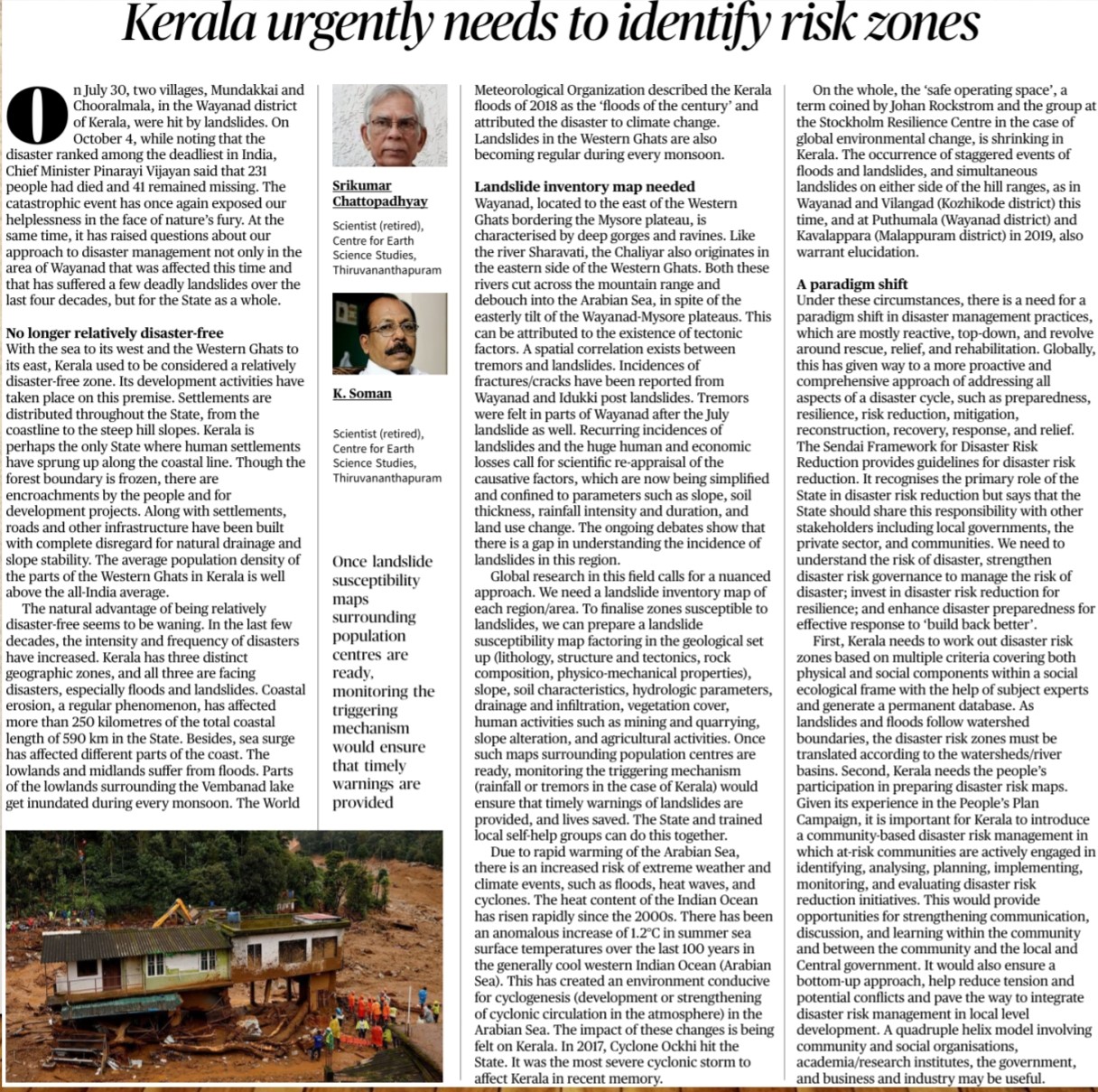Kerala: A Paradigm Shift in Disaster Management
Introduction
The recent landslides in Wayanad district, Kerala, underscore the urgent need for a comprehensive and proactive approach to disaster management in the state.
The increasing frequency and intensity of disasters, such as floods and landslides, have exposed Kerala’s vulnerability despite its historical reputation as a relatively disaster-free zone.
This article argues that Kerala must identify risk zones, implement a community-based disaster risk management approach, and shift towards a more proactive and comprehensive disaster management paradigm.
Identifying Risk Zones:
- Landslide Inventory Maps: To accurately identify risk zones, Kerala needs to create detailed landslide inventory maps for each region. These maps should factor in geological factors, slope stability, soil characteristics, hydrological parameters, land use changes, and other relevant variables.
- Landslide Susceptibility Maps: Once the inventory maps are prepared, landslide susceptibility maps can be created to delineate areas prone to landslides. These maps can be used to guide development activities and prioritize risk reduction measures.
- Monitoring Triggering Mechanisms: Continuous monitoring of rainfall patterns and seismic activity is essential to provide timely warnings of potential landslides. This can be achieved through a combination of meteorological and geological observations.
Community-Based Disaster Risk Management:
- People’s Participation: Kerala’s experience with the People’s Plan Campaign demonstrates the effectiveness of community involvement in development initiatives. A similar approach should be adopted for disaster risk management, with at-risk communities actively engaged in identifying, analyzing, and implementing risk reduction measures.
- Bottom-Up Approach: Community-based disaster risk management ensures a bottom-up approach, fostering local ownership and reducing potential conflicts. It also strengthens communication and learning within communities.
- Quadruple Helix Model: A collaborative approach involving community organizations, academia, government, and the private sector can enhance the effectiveness of disaster risk management efforts.
Paradigm Shift in Disaster Management:
- Proactive Approach: Kerala must shift from a reactive approach to a proactive one, focusing on prevention, preparedness, and mitigation rather than solely on response and recovery.
- Comprehensive Approach: Disaster management should address all aspects of the disaster cycle, including risk assessment, preparedness, response, recovery, and reconstruction.
- Sendai Framework: The Sendai Framework for Disaster Risk Reduction provides valuable guidelines for Kerala to adopt a more comprehensive and inclusive approach to disaster management.
Conclusion
The devastating landslides in Wayanad highlight the urgent need for Kerala to reassess its approach to disaster management.
By identifying risk zones, implementing community-based disaster risk management, and adopting a more proactive and comprehensive paradigm, Kerala can better protect its citizens and infrastructure from future disasters.
A concerted effort involving all stakeholders is essential to ensure the long-term resilience of the state.
Mains Practice Question: |
“Kerala has witnessed a surge in natural disasters in recent years. Discuss the factors contributing to this increase and suggest measures to enhance the state’s resilience to such events.” |


